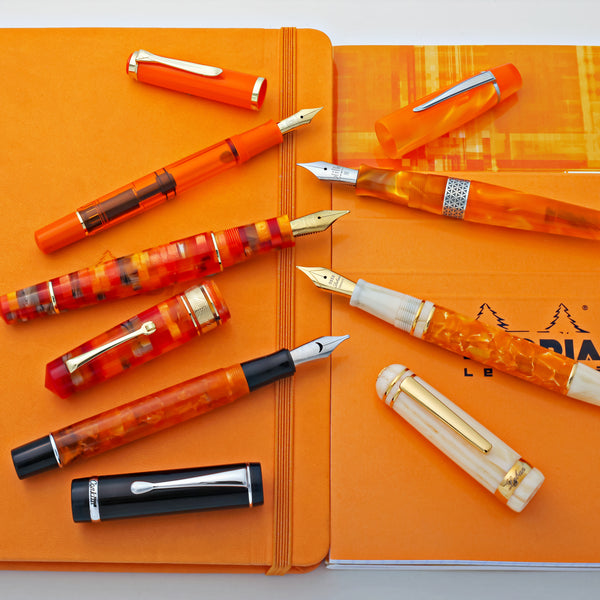What Makes a Good Pen for Taking Good Notes?
A good pen has the power to make your note taking experience a total joy or a downright drag. The best pens for note-taking are consistent, comfortable, and offer you plenty of options. They should be consistent in ink flow without skipping or smudging. They should be comfortable enough to prevent hand fatigue during long classes, with rubberized grips and ergonomic shapes. They should also go beyond the standard blue or black ink. Different ink colors are ideal for headings, highlighting, and color coding. While more expensive pens often offer better performance, you can find price-friendly options that still provide a pleasant writing experience.
Your Favorite Type of Pen
Depending on your specific notetaking needs, it’s a good idea to experiment with different pens to see which types you like best. If you don’t mind a learning curve and purchasing refills, a fountain pen might be a perfect match. If you’re a meticulous writer with an eye for detail, you might prefer a ballpoint pen. If you can’t get enough color in your notebooks, consider gel pens your new best friends. Next, let’s dive into the different types of pens to point you in the right direction.
Fountain Pens
If you take pride in your handwriting and prefer a distinct, elegant look, the fountain pen is a trusty classroom companion. Fountain pens require occasional cleaning and are a bit more high-maintenance compared to other pens. They also may not be ideal for fast note taking. We recommend you use high-quality paper for best results. Since the liquid ink flows from a refillable reservoir, you can expect a consistent writing experience with varying line thicknesses depending on how much pressure you use.
Ballpoint Pens
Widely available at a good price point, ballpoint pen ink dries quickly on almost all types of paper. They are durable and don’t smudge easily, making them a good choice for the everyday notetaker. Ballpoints provide consistent line thickness but can lead to hand fatigue in long lectures. Consider alternating your ballpoint pen with other pen types we’ve discussed in this article.
Rollerball Pens
A balance between fountain pens and ballpoint pens, rollerball ink is known to flow freely. While this leads to an uninterrupted line, it might not be ideal for left-handed notetakers due to the frequency of smudges. The water-based ink makes for less precise notes compared to ballpoints. Rollerballs are a great choice for students who want a smooth writing experience without the maintenance of a fountain pen.
Gel Pens
Gel pens get an A+ for versatility, suitable for notetaking, doodling, and annotating important information in vibrant colors. Gel ink pens dry quickly, reducing the risk of smudges during class. Some brands like the Pentel Energel come with refillable liquid gel. While they are prone to skipping if the ball tip gets clogged, gel pens offer a vivid writing experience in nearly every color imaginable.
Fine-Liners
Ideal for underlining, drawing diagrams, and straight lines, fine-liners use water-based or pigment-based ink. They tend to last longer than other pens and don’t dry out quickly. While they aren’t the best choice for lengthy note taking, fine-liners are a great choice for adding detail and personality to your notebooks. With marker pens, the beauty is truly in the details.
Brush Pens
Using brush pens comes with a learning curve, but it’s well worth it if you love calligraphy-style notes. The flexible tips and water-based pigment of brush pens allow for thin and thick lines. Great for creative headers, titles, and highlighting, brush pens are a fun way to add emphasis and aesthetic to your favorite subjects. They also make beautiful (and thoughtful) gifts for the back-to-school season.





